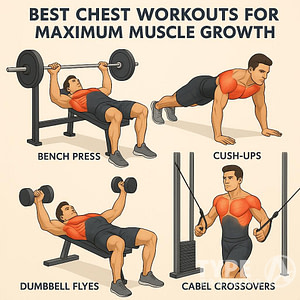Cannabidiol (CBD) is gaining popularity in the fitness world for its potential benefits and uses. Many are turning to this compound for relief from inflammation and muscle pain, hoping to enhance their training routines and recovery times.
Understanding how CBD interacts with the body is essential for athletes and fitness enthusiasts. CBD is a non-psychoactive compound found in cannabis, and it is often used for its potential anti-inflammatory and pain-relieving properties.
The method of consumption can affect its efficacy, with some finding greater benefits through certain forms of intake.
As with any supplement, it’s important to consider the potential side effects and legal considerations. CBD’s legal status can vary, so checking local regulations is crucial.
Popular posts:
Determining the right dosage and method of consumption can also impact how it may benefit your fitness and training regimen.
Key Takeaways
- CBD may help reduce inflammation and pain.
- Method of consumption can affect CBD efficacy.
- Legal considerations vary by location.
Understanding CBD and Its Role in Fitness
CBD, a compound derived from the cannabis plant, plays an interesting role in fitness by interacting with the body’s endocannabinoid system. This interaction is pivotal in understanding how CBD may help in areas such as recovery and inflammation.
The Endocannabinoid System and Cannabinoid Receptors
The endocannabinoid system (ECS) is crucial for regulating physiological functions, including mood, appetite, and pain.
It consists of cannabinoid receptors, primarily CB1 and CB2, that are spread throughout your body. These receptors interact with endocannabinoids, which are naturally produced by your body.
Cannabinoids like CBD and THC, which are phytocannabinoids from the cannabis plant, also interact with these receptors. CBD is non-intoxicating, unlike THC.
In fitness, CBD potentially aids in decreasing inflammation and muscle recovery due to its interaction with CB2 receptors, mainly found in the immune system. This interaction helps modulate pain and inflammation responses.
A better-functioning ECS can be beneficial for athletes and fitness enthusiasts seeking quicker recovery times.
CBD vs. THC: The Nonpsychoactive Profile
When exploring cannabinoids, it’s important to note the difference between CBD and THC. While THC is the psychoactive component in Cannabis Sativa, CBD is known for being nonpsychoactive.
This characteristic makes CBD a more appealing option for those who wish to avoid the mind-altering effects of THC.
In fitness, CBD is valued for its ability to assist in recovery without causing intoxication. The nonpsychoactive nature of CBD allows you to incorporate it into your routine without affecting cognitive function. Its role in muscle relief and anti-inflammatory properties further highlights its potential benefits for athletes and fitness enthusiasts.
Potential Benefits of CBD for Athletes
Cannabidiol (CBD) offers several potential advantages for athletes, such as aiding muscle recovery, reducing pain, lessening anxiety and stress, and enhancing sleep quality. These benefits can help improve athletic performance and support overall well-being.
Promoting Muscle Recovery
CBD may assist in muscle recovery by acting as an anti-inflammatory agent.
By reducing inflammation and soreness following intense physical activity, it helps athletes recover more efficiently.
Inflammation can slow down recovery time, but CBD might limit its impact, allowing muscles to heal faster.
Studies suggest that CBD’s interaction with the endocannabinoid system can help modulate inflammatory responses. This process can be especially beneficial when it comes to muscle soreness and damage from strenuous workouts.
As a result, incorporating CBD into your routine could help optimize recovery.
Pain Management and Anti-Inflammatory Effects
Using CBD in pain management offers potential advantages due to its anti-inflammatory properties.
It might help relieve joint and muscle pain, which is crucial for maintaining physical performance.
Athletes often encounter acute or chronic pain, and CBD could be a natural way to alleviate such discomfort.
CBD doesn’t have the intoxicating effects commonly associated with cannabinoids like THC, making it appealing for pain relief without altering mental state.
Research indicates promise in managing chronic pain conditions, potentially making it a useful addition to your pain management strategy.
Anxiety and Stress Reduction
Athletes may experience anxiety and stress due to performance pressure or competition.
CBD has been recognized for its anxiolytic properties, which could help address these challenges.
By interacting with serotonin receptors in the brain, it may contribute to a calming effect.
Reducing stress can lead to improved concentration and focus during competitions. Additionally, lower stress levels might also result in fewer stress-induced injuries, providing overall benefits to your training and performance regimen.
Improving Sleep Quality
Quality sleep is vital for athletes, as it affects recovery and performance.
CBD might improve sleep quality by addressing issues like anxiety and pain that often disrupt sleep patterns.
A good night’s sleep is integral to better recovery, cognitive function, and energy levels.
By promoting relaxation and reducing restlessness, CBD could help you achieve REM sleep, which is essential for muscle repair and memory consolidation.
Using CBD as a supplement for better sleep might enhance your athletic output, helping you perform at your best.
Safety and Side Effects of CBD in Fitness
When incorporating CBD into your fitness regimen, understanding the potential safety concerns and side effects is crucial. Important considerations include its impact on liver health and possible interactions with medications.
Liver Health and CBD
CBD’s effects on liver function have drawn attention from researchers.
The FDA has acknowledged that consuming CBD in high doses can lead to liver injury in some cases. Clinical studies have observed alterations in liver enzymes, indicating potential liver stress.
It’s important to be mindful of the dosage and monitor liver enzyme levels if you’re regularly using CBD, especially at high doses.
If you have pre-existing liver conditions, consult a healthcare professional before starting CBD.
Staying informed about these effects can help you make safer decisions regarding CBD usage.
Interactions with Medications
CBD can interact with various medications, affecting their pharmacokinetics, which is how a drug is absorbed, distributed, metabolized, and excreted.
These interactions may either reduce the effectiveness of the medications or increase their side effects.
This is due to CBD’s influence on cytochrome P450 enzymes, a family of liver enzymes that metabolize many drugs.
If you’re taking medications like blood thinners or anticonvulsants, for instance, you should consult your doctor before adding CBD to your routine.
Being cautious about these interactions can help mitigate unwanted consequences and ensure safer use of CBD in conjunction with other treatments.
Regulations and Legal Considerations for Using CBD
When considering the use of CBD in the context of fitness and training, it’s essential to understand the legal landscape. The policies of the World Anti-Doping Agency, the implications of the 2018 Farm Bill, and various state laws form the foundation of CBD’s regulatory status.
World Anti-Doping Agency Stance
The World Anti-Doping Agency (WADA) has taken significant steps regarding CBD use.
As of 2018, WADA removed CBD from its list of prohibited substances, allowing athletes to use it without risking disqualification. However, it’s crucial to note that THC, another compound found in cannabis, remains banned.
Athletes must ensure that their CBD products do not contain THC in significant amounts.
It’s also important for athletes to verify that their CBD products come from reputable sources.
Products labeled as CBD might contain other cannabinoids, including THC, which could conflict with anti-doping regulations.
Understanding these specifics helps athletes make informed decisions when incorporating CBD into their regimen.
CBD Legal Status and the 2018 Farm Bill
The 2018 Farm Bill significantly altered the legal landscape for hemp-derived CBD. This legislation legalized hemp with a THC content below 0.3%. Consequently, CBD derived from these plants became federally legal in the United States. However, this does not extend blanket legality to all CBD products.
The FDA is involved in regulating CBD in food and dietary supplements, yet clear guidelines are still evolving.
This lack of clarity means it’s crucial for consumers to stay updated on federal regulations when considering CBD products, especially in the context of fitness supplements.
State Laws and Controlled Substances Act
State laws regarding CBD use vary widely across the United States.
While some states fully embrace CBD legalization, others impose stricter regulations. For instance, some states allow CBD for medical use only, while others restrict its use to products with low THC content.
Despite the federal recognition provided by the Farm Bill, the Controlled Substances Act still categorizes marijuana as a controlled substance.
This creates a complex legal environment where state-specific regulations often prevail. Therefore, you need to be aware of both federal and state laws to ensure compliance and avoid potential legal issues when using CBD for fitness and training.
How CBD is Consumed by Athletes
Athletes looking to incorporate CBD into their routines have various options depending on their preferences and needs. Popular methods include sublingual oils, oral capsules, and topical applications, each offering unique advantages and levels of bioavailability.
CBD Oil and Tinctures
CBD oil and tinctures are popular choices among athletes.
You consume them by placing a few drops under your tongue, allowing for quicker absorption into the bloodstream through sublingual glands.
This method offers flexibility in dosing, enabling you to adjust the amount based on your needs.
Keep an eye out for high-quality products that use a full-spectrum or CBD isolate formulation to maximize benefits.
The ease of use makes tinctures convenient for athletes who need quick relief from muscle soreness or inflammation.
You can also mix them with food or beverages if you prefer not to take them sublingually. Be sure to verify the product’s concentration, so you get the desired effect without overconsuming.
Capsules and Pills
CBD capsules and pills are another convenient way to incorporate CBD into your regimen. These come pre-dosed, offering a simple and consistent option for those seeking precision in their daily intake.
With capsules, you don’t worry about the taste or measuring the correct dose, as everything is prepared for you.
Bioavailability is an important factor here, as capsules usually have a slower onset but provide longer-lasting effects. This can be particularly useful if you’re planning to sustain pain relief or manage inflammation over an extended period.
Opt for high-quality products to ensure you’re getting effective and safe results.
Topical CBD Applications
Topical CBD products, including creams, balms, and lotions, allow for targeted application to specific body areas. They are particularly beneficial for localized pain relief, such as joint or muscle pain.
By applying directly to the skin, you can address problem areas without affecting the entire body.
These products usually contain CBD along with other ingredients designed to soothe or heal. Athletes favor topicals for their ability to quickly alleviate discomfort after intense training.
When choosing a topical product, ensure it is made from high-quality ingredients and has a concentration that’s suitable for your needs.
Dosage and Efficacy in Sports Performance
CBD’s role in sports performance is becoming increasingly prominent, with emerging research exploring its potential effects. Understanding the right dosage and examining existing clinical studies can help optimize its benefits in athletic contexts.
Finding the Right Dosage
Determining the right dosage of CBD for sports performance requires careful consideration of individual factors such as weight, metabolism, and specific goals.
Typically, a range between 15-25 mg per day is often suggested for general wellness.
Athletes may need to adjust the dosage based on their training intensity or therapeutic needs. Start with a low dose and gradually increase to monitor the effects.
Consulting with a healthcare professional can provide personalized guidance, ensuring safe and effective use.
Evidence on CBD’s Efficacy in Sports
Current evidence on CBD’s efficacy in enhancing sports performance is still evolving. Some clinical studies suggest potential benefits like reduced inflammation, improved recovery, and stress management.
Athletes report anecdotal improvements in overall well-being and soreness reduction.
However, the effects can vary significantly due to limited large-scale studies. Future research is crucial for understanding its full therapeutic applications. For now, CBD should be used as part of a larger strategy, complementing training and nutrition efforts, rather than as a primary performance-enhancing supplement.
Case Studies and Research on CBD in Fitness
Research on CBD in fitness has explored its therapeutic potential and efficacy in enhancing physical performance and recovery. This section will discuss clinical trials and real-life applications of CBD in sports and exercise.
Notable Clinical Trials
Clinical studies have investigated the impact of CBD on exercise performance and recovery. One study observed that CBD can affect physiological markers.
For instance, participants who took 60 mg of CBD experienced decreased blood serum concentrations of creatine kinase and myoglobin. This suggested reduced muscle damage following resistance exercise.
Another investigation on the effects of CBD during exercise revealed that it may counteract specific inflammatory responses.
In research involving mice, CBD appeared to modulate inflammation and possibly reverse exercise-induced myocardial injury.
Though these findings are promising, they often highlight the need for further research to make definitive conclusions on CBD’s broad-range efficacy in fitness contexts.
Real-Life Success Stories
Some athletes have started integrating CBD into their training regimens, claiming improved recovery times and reduced post-exercise soreness.
For instance, several users have reported a decreased feeling of exhaustion, which they attribute to CBD’s purported therapeutic applications in managing inflammation and stress.
While these real-life accounts provide valuable anecdotal evidence, it’s crucial to approach them with a critical perspective.
They can offer insights into the potential applications of cannabinoids, such as CBD, in daily fitness routines. Yet, without robust clinical backing, individual outcomes may vary widely.
Overall, real-life experiences can inspire interest, but they should not replace scientific research’s role in confirming benefits and guiding proper use.
Future Perspectives on CBD and Exercise Recovery
The potential of CBD in enhancing exercise recovery is gaining traction, with innovations in products and emerging trends driving this interest. The developments in product formulation and the integration of CBD into fitness routines are particularly noteworthy.
Innovations in CBD Products
CBD’s role in exercise recovery is evolving as product innovations emerge. One noteworthy development is the creation of topical applications like creams and gels aimed at targeting pain and inflammation directly at the site.
These products often combine CBD with ingredients such as menthol for enhanced soothing effects.
Nano-emulsion technology is also gaining attention. By increasing the bioavailability of CBD, these formulations allow for more efficient absorption in the body, potentially enhancing the compound’s effectiveness in aiding recovery.
Products leveraging this technology may offer quicker relief and longer-lasting effects.
You might also see CBD-infused recovery drinks entering the market. These beverages could provide a dual benefit—rehydration and potential reduction of post-workout soreness.
It’s essential to stay updated on these advancements to make informed decisions about incorporating CBD into your fitness regimen.
Trends in CBD and Fitness
As CBD gains popularity in fitness, various trends are forming. The integration of CBD into personalized fitness plans is one significant trend.
Personal trainers and coaches may recommend CBD as part of a comprehensive recovery strategy tailored to your unique needs.
Another notable trend is the growing use of full-spectrum CBD products that include other cannabinoids and terpenes, excluding THC, offering an “entourage effect.”
This effect is believed to enhance the potential benefits of CBD for recovery through synergistic interactions.
Consumer demand for transparency is also influencing trends. People want to know the sources, purity, and potency of their CBD products, pushing companies to provide more detailed lab reports and certifications.
As you explore these trends, consider how they align with your recovery and fitness goals.
Frequently Asked Questions
CBD is gaining recognition in the fitness world for its potential benefits in reducing inflammation, aiding recovery, and alleviating exercise-induced stress. Below, you’ll find specific insights into these advantages and considerations for athletes.
What are the potential benefits of using CBD oil for fitness enthusiasts?
CBD oil may offer significant benefits for those engaged in fitness activities.
It is known for reducing inflammation and pain, making it helpful in managing issues like joint pain or soreness from intense workouts. These properties can lead to improved overall comfort and performance in your fitness routine.
How might CBD impact muscle recovery and weight training?
CBD’s anti-inflammatory effects play a crucial role in muscle recovery. By potentially speeding up the reduction of inflammation, CBD can help in healing tissues and reducing recovery time after weight training.
This can be particularly beneficial for athletes looking to maximize their training efficiency.
Can CBD help with exercise-induced anxiety and stress?
Exercise-induced anxiety and stress may be relieved by CBD due to its calming effects.
It interacts with receptors in the brain that regulate mood and stress, potentially leading to a more relaxed and focused mental state during workouts. This may enhance your ability to perform.
Are there any known drawbacks of using CBD for sports training?
CBD use in sports training might include certain drawbacks.
One possible issue is the lack of comprehensive research on long-term effects. Additionally, it may interact with other medications, so it’s vital to consult with a healthcare professional before incorporating it extensively into your regimen.
What should athletes know about CBD and exercise performance enhancement?
While CBD is not directly linked with enhancing exercise performance, it may support performance indirectly by improving recovery and reducing stress.
Athletes should understand that CBD is not a substitute for traditional performance-enhancing strategies but can complement them through its natural properties.
How does CBD interact with the body during high-intensity workouts?
During high-intensity workouts, CBD interacts with the body’s endocannabinoid system. This system plays a role in regulating pain, mood, and inflammation. This interaction may help in maintaining a level of comfort and focus. However, the specific effects can vary among individuals.














